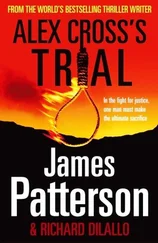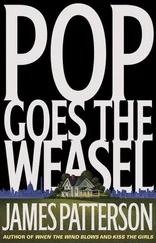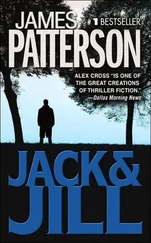“Over?”
“She wasn’t showing up on time and she was doing a halfassed job,” Mize replied. “And though I could never prove it, I think she was stealing things.”
“You think?”
Mize gestured all around. “Keeping track of my inventory is more an art than a science. I can’t begin to remember every piece of jewelry, for example.”
“That what you think she stole?” Johnson said. “Jewelry?”
“Yes,” Mize said. “Several pieces that were my mother’s that just weren’t anywhere one day.”
“How’d you come to hire Francie?”
“Through a service,” he sniffed. “I was told she was highly recommended.”
“When was the last time you saw her?”
“Saw? I don’t know, five months ago, but I heard from her a few days back. She left a message on my machine at home. Can you imagine the gall?”
“What was the message?”
“She said she was sorry about any misunderstanding we’d had and was looking for her job back.”
“You return her call?”
“Certainly not, and I erased the message.”
“What day was that?”
“Saturday? Sunday?”
“Where were you Sunday?”
Mize thought about that. “Worked here the whole afternoon. Had early sushi with Coco and her sister, went home around eight, watched old movies on Netflix for a bit. The Thomas Crown Affair, have you seen it?”
“No.”
“You should. It’s very good. The original, not the remake. But anyway, after drooling over Faye Dunaway and Steve McQueen, I went to sleep around ten. I like to go to bed early and get up early. You?”
“Same,” Johnson said. “Do you know Ruth Abrams or Lisa Martin?”
“After I saw the stories in the paper, I racked my brain. I’m sure I’ve met them both at one social function or another. Terrible, though.”
“Francie Letourneau worked for both women.”
“Really? Do you think she was somehow involved in their deaths? And then, what, got killed herself?”
“It’s possible,” Johnson said, and he felt his cell phone buzz. It was Drummond again.
“Get your ass to the Crawford place,” the sergeant growled. “The missus is dead.”
Detective Johnson was Climbing out of his car when Sergeant Drummond pulled us up beside him and parked on Ocean Boulevard between two patrol cars flashing their blue lights.
The heat had been stupefying when I joined Drummond in the parking lot of the Hampton Inn over in West Palm, but here, so close to the beach and water, there was a beautiful shore breeze. No wonder this had been the winter spot for the super-rich for, what, more than a century? Isn’t that what the sergeant had said last night?
Before I could make sure the three beers hadn’t addled my memory, Johnson started telling Drummond about his trip to Mize Fine Arts as they walked onto the grounds of the Crawford residence, a rambling white Mediterranean with a red-tile roof. The gardens inside the gate were stunning and gave way to a waterfall in a Zen-like setting.
The house was... well, I’d never been in one like it. Then again, I don’t get the chance to roam around in Palm Beach mansions a lot. Let’s just say that every room was designed for Architectural Digest.
The kitchen was over the top, with Swedish and Finnish appliances that gleamed like they’d been installed the day before and gorgeous Italian tile work. The library looked stolen from some abbey in southern France. And the bedroom where Maggie Crawford lay was as bright as a Florida day.
I scanned the room, saw the pills, the Patrón bottle, and the tumbler on the bed stand by the blowsy woman tucked under the covers. She must have been stunning once. She could have been sleeping there had her skin not been blue.
“Let’s not be touching anything,” Drummond said. “This will be a forensics case through and through.”
I couldn’t argue with him. There was no sign of struggle. It would be up to the lab people to tell us how she died.
A deputy appeared at the door, said, “The deceased’s personal assistant is downstairs. She called it in.”
We found Candace Layne in a miserable state in that beautiful library.
“This was what everyone feared would happen,” Layne said. “It’s why John, her soon-to-be ex, left. He couldn’t watch her self-destruct anymore.”
“Drug and alcohol problems?” I asked.
Layne nodded sadly. “Deep down, despite all the money, all the beauty and good fortune, she was an insecure, anxiety-ridden person.”
“When did you last see her?” Johnson asked.
“Yesterday around five thirty,” she said.
“Would you have been the last person to see her alive?”
“I would think so,” Layne said. “She had no plans for the evening. She was going to read and watch a movie.”
Drummond asked Layne if she knew the other three dead women, the two socialites and Francie Letourneau. When Layne responded by asking the sergeant if he thought Maggie Crawford had been murdered, he told her he was just covering all the bases. Layne said she’d fired Letourneau after Maggie caught her stealing silver. She’d e-mailed the personal assistants of Ruth Abrams and Lisa Martin but never met them.
“Did Mrs. Crawford run in their circle?” Drummond asked.
“Same fund-raisers, that kind of thing,” Layne said, nodding.
Even though we had no conclusive evidence that Maggie Crawford had been murdered, in my mind the four killings were linked. Three socialites, all using the same Haitian maid at some point. Three socialites and the maid now dead. This was no coincidence, which meant that there was a missing link, some factor that tied them all together.
“How long have you worked for her?” I asked.
“Five years next month,” Layne said sadly.
“Would you know if some of her things were missing?” Johnson said. “Like jewelry? Clothes?”
Layne nodded. “I think so. Do you want me to look?”
“We’ll wait until the forensics folks do their thing,” Drummond said. “Tell me about her.”
“Maggie?” Layne said, then thought. “Most of the time she was the kindest, funniest, most generous person you could ever meet, a real joy to work for. But sometimes, when her mind was altered, she was a tyrant, a little rich girl who wanted what she wanted right now. And even when she was sober, she often had this kind of... I don’t know... melancholy or wanting about her. There, you can see it in her expression in that painting over there.”
Layne gestured toward an oil painting of Maggie Crawford, barefoot, dressed in jeans and a pink blouse. She was sitting on a sand dune with sea grass around her, caught in three-quarter profile as she looked out toward the ocean. I walked over to study it, saw the expression the personal assistant had been talking about.
“That’s a big thing among the super-rich, right?” Johnson said behind me. “You know, getting your portrait painted?”
“I don’t know; I suppose so,” Layne said.
“Ruth Abrams and Lisa Martin had portraits done of them,” Drummond said, coming over to examine the painting. “Coco.”
“What?” Johnson said.
“Right here in the corner,” the sergeant said. “It’s signed Coco. ”
“I have no idea who that is,” Layne said.
“Oh, I think I might,” Johnson said. “I met a Coco just this morning.”
Starksville, North Carolina
Around four o’clock that afternoon, Bree walked along the railroad tracks where she’d seen Finn Davis give a three-finger salute to six young men riding freight cars on a train heading north.
“What are we looking for?” Naomi said.
Читать дальше












